
by Michael Barera
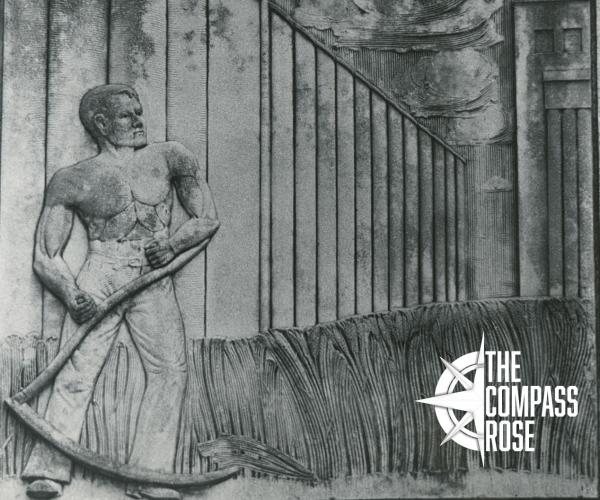

by Michael Barera

Today, Special Collections presents a special guest post from History doctoral candidate William Hansard. He discusses the Judith Singer Cohen Cowtown Moderne Research Collection, the history of Art Deco in Fort Worth, and donor Judith Cohen's personal history.
The purpose of The Compass Rose is to raise awareness of Special Collections' resources and to foster the use of these resources. The blog series also reports significant new programs, initiatives, and acquisitions of Special Collections.
In 2020, UTA Special Collections fortuitously acquired the collection of Judith Singer Cohen, an art historian, historic preservationist, and author of the book Cowtown Moderne: Art Deco Architecture of Fort Worth, Texas (Texas A&M University Press, 1988). The collection is a treasure trove of research materials, which documents both the history of Art Deco architecture and design in Fort Worth as well as the historic preservation and adaptive reuse of those buildings. It consists of research notes, clippings, correspondence and print materials, as well as photographs taken largely by Judith Cohen's husband, Dr. Donald M. Cohen. The collection also includes original historical materials, such as blueprints and interior design drawings. Mrs. Cohen generously allowed her collection to be entrusted to the care of student workers, who took on the project in the summer of 2020. Three students from the Department of History – William Hansard (doctoral candidate), Kevin Moskowitz (doctoral candidate), and Natalie Idom (undergraduate) – worked together to process the collection, digitize the photographs, and to disseminate their research through the creation and editing of Wikipedia articles.
The Judith Singer Cohen Cowtown Moderne Research Collection will be of use to a wide variety of scholars and researchers. Topics that are well documented by the collection include the history of Art Deco architecture and design, the history of Fort Worth and of urban development, and the historic preservation and adaptive reuse of buildings. Other architectural and design topics are documented as well, especially in slides and photographs. Judith Cohen’s research notes for both her master’s thesis and the book Cowtown Moderne are extensive and detailed, and of particular interest are her notes from interviews with prominent Fort Worth citizens. Cohen’s involvement in historic preservation groups is also well documented, offering a comprehensive view into the complexities of the private-public partnerships that drive the adaptive reuse and restoration of historic architecture. In addition to manuscripts and documents, the collection also includes many visual materials. Most significant among these are photographs and negatives, mostly in black-and-white, of Fort Worth’s Art Deco architecture taken by Cohen’s husband Donald. Most were taken in the 1970s and 1980s for both the research and illustrations of the book Cowtown Moderne. Featuring both shots of entire buildings as well as close-up design details, these photographs are of great value both for their informational content and their aesthetic qualities. Finally, Cohen also gathered several primary historical materials, such as the design portfolio of architect Hubert Hammond Crane, and the blueprints and interior design drawings for the original Harris Clinic, which was demolished in 1983. These materials, combined with Cohen’s own research, will help researchers to gain a broader and deeper understanding of the significance of Art Deco architecture and design to the history and development of the city of Fort Worth.

Art Deco detail
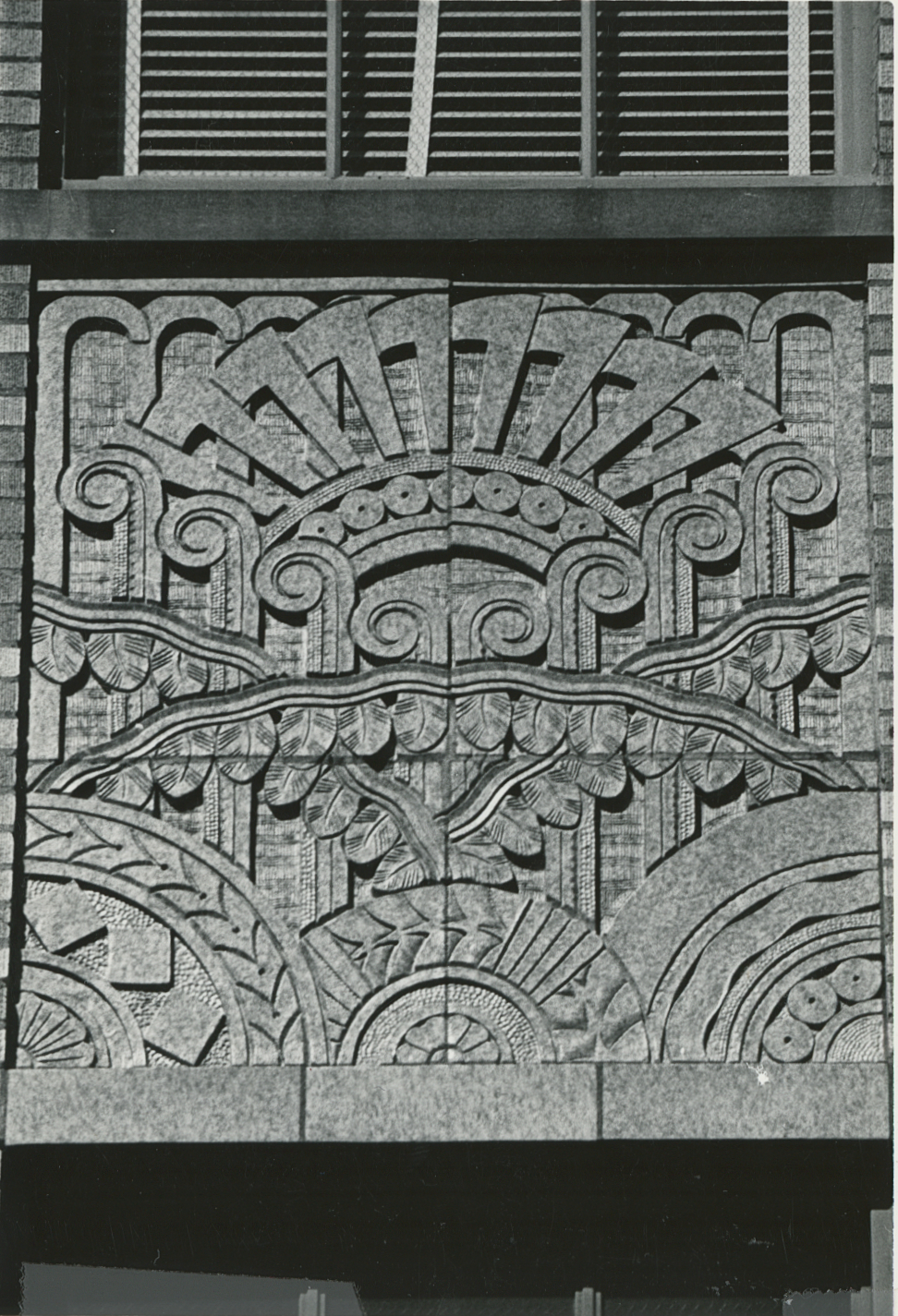
Art Deco detail
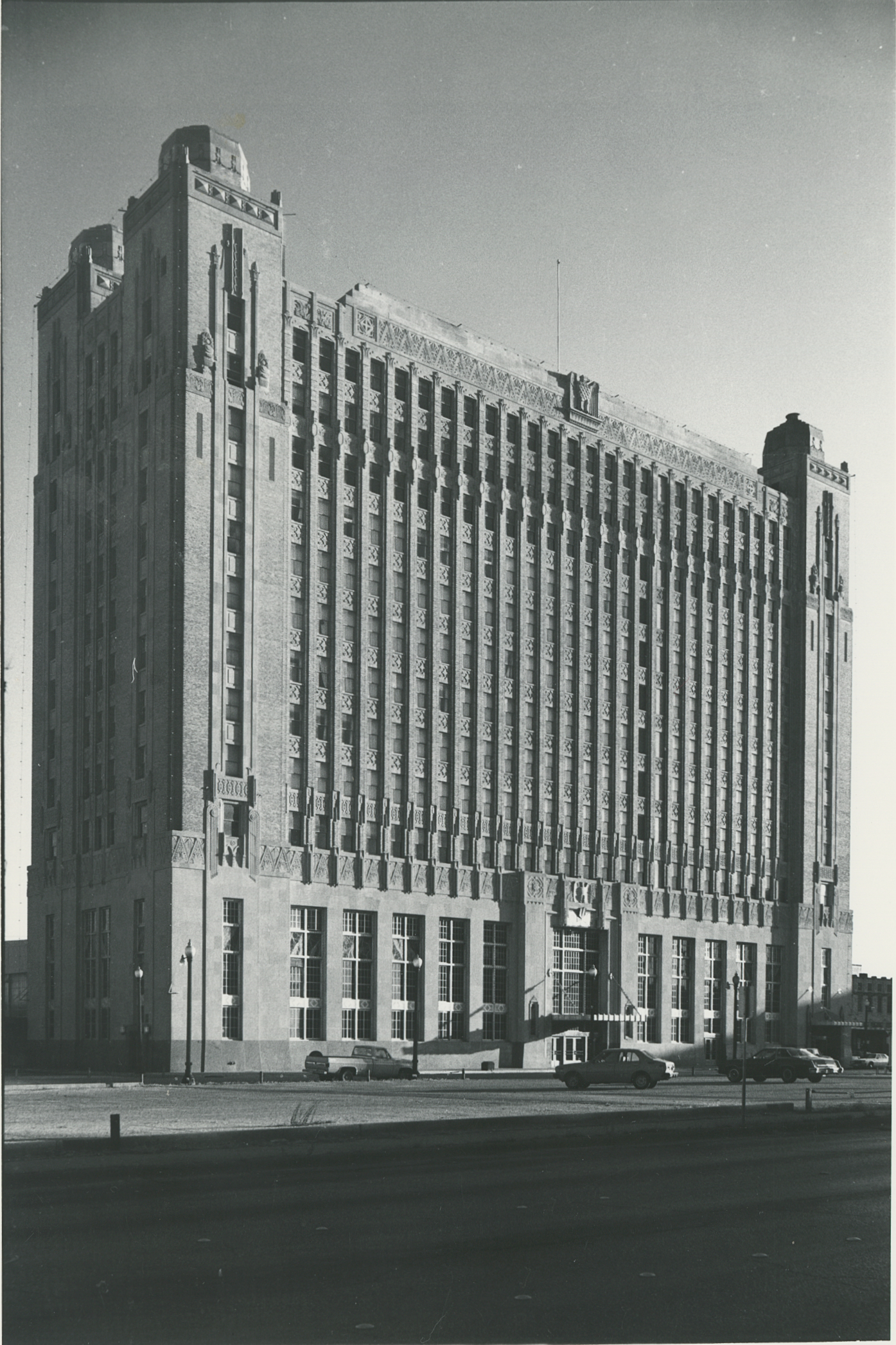
Exterior of Texas and Pacific Station
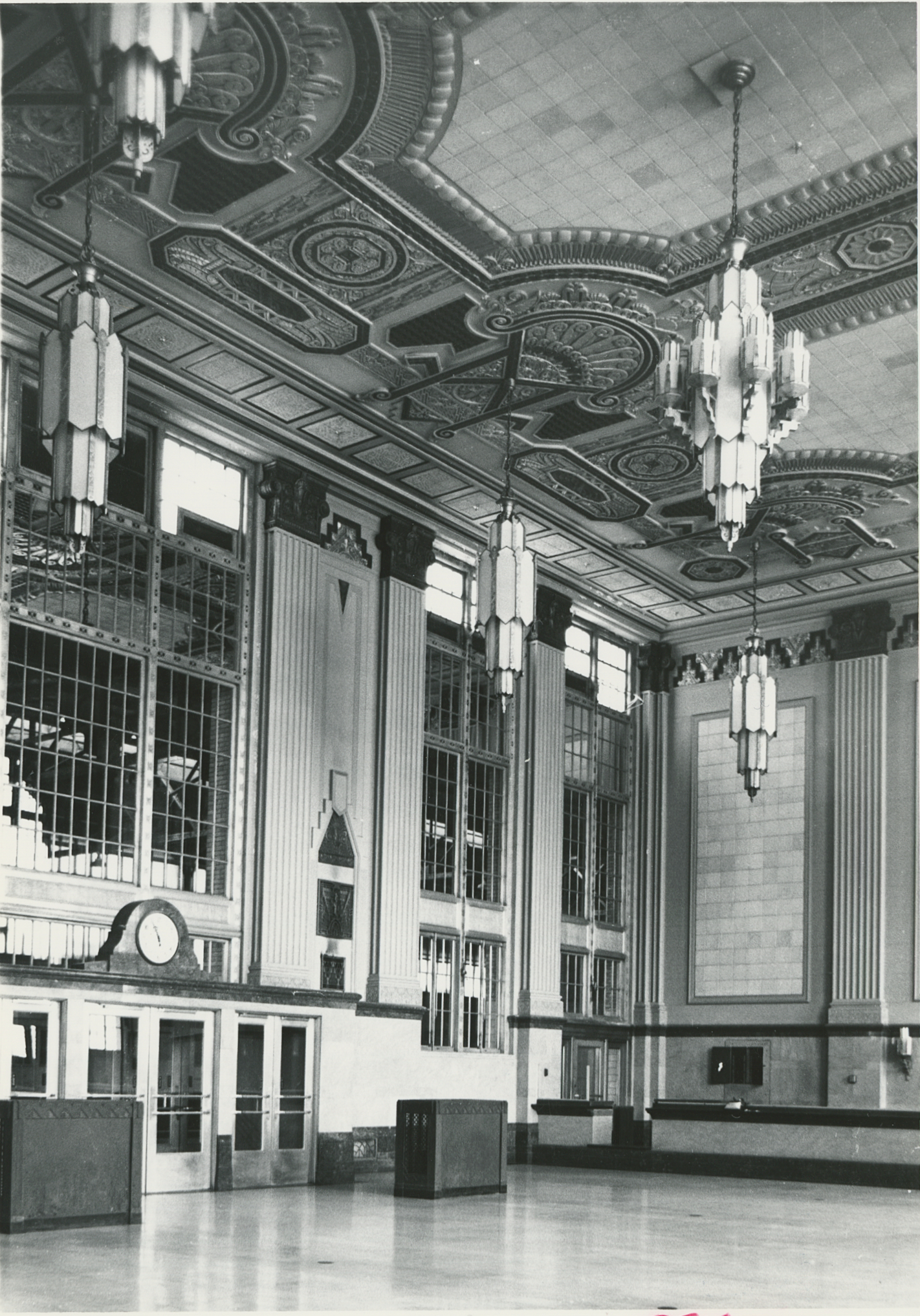
Interior of Texas and Pacific Station
Fort Worth’s landscape is considerably shaped by the presence of notable examples of Art Deco architecture and design, because, as Cohen notes, “the twenty-year developmental period of the Moderne Style coincides with the emergence of modern Fort Worth” (Cohen 1988 p. 6). The period of Art Deco architecture, properly called Moderne according to Cohen’s book, lasted from 1925 through the early 1940s, and can be divided into three phases – Zigzag, PWA (Public Works Administration), and Streamline. Although all three phases have unique qualities, there are certain shared similarities. Art Deco, as a whole, is characterized by the influence of art and design movements that emphasize flamboyant theatricality, from ancient Egyptian art to Cubism. Buildings were also mass-produced, in a sense, with architects embracing the use of reinforced concrete to produce larger and more imposing buildings. New materials such as stainless steel and chrome allowed for the efficient production of dazzling ornamentation. It is this monumental quality, a combination of being grandiose with intricate detail that makes Art Deco design so distinguishable. With both practical and artistic considerations requiring the blurring of lines between these three styles, the unique blend of Art Deco design aesthetics in Fort Worth’s architecture has come to be known as "Cowtown Moderne."
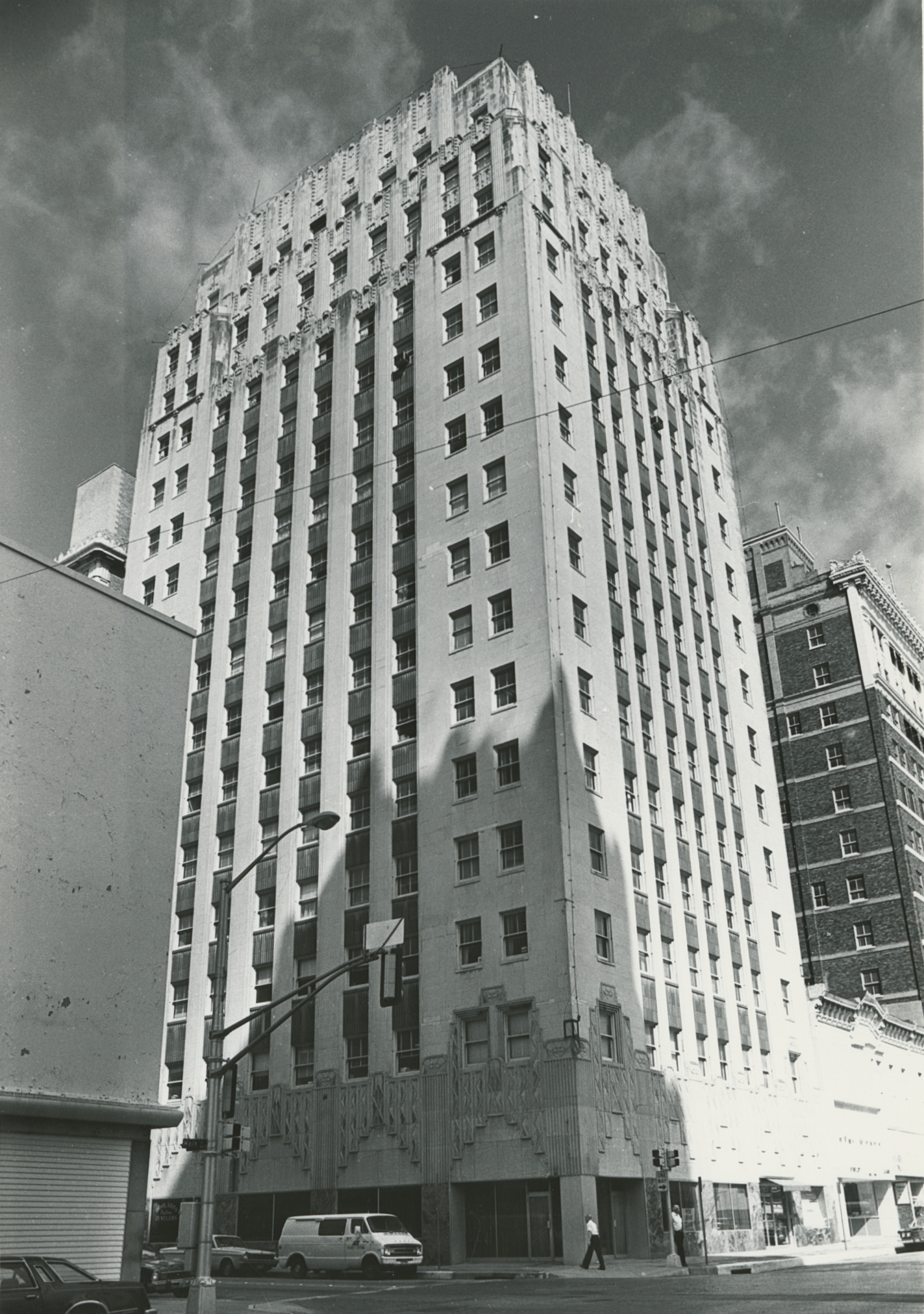
Exterior of the Sinclair Building
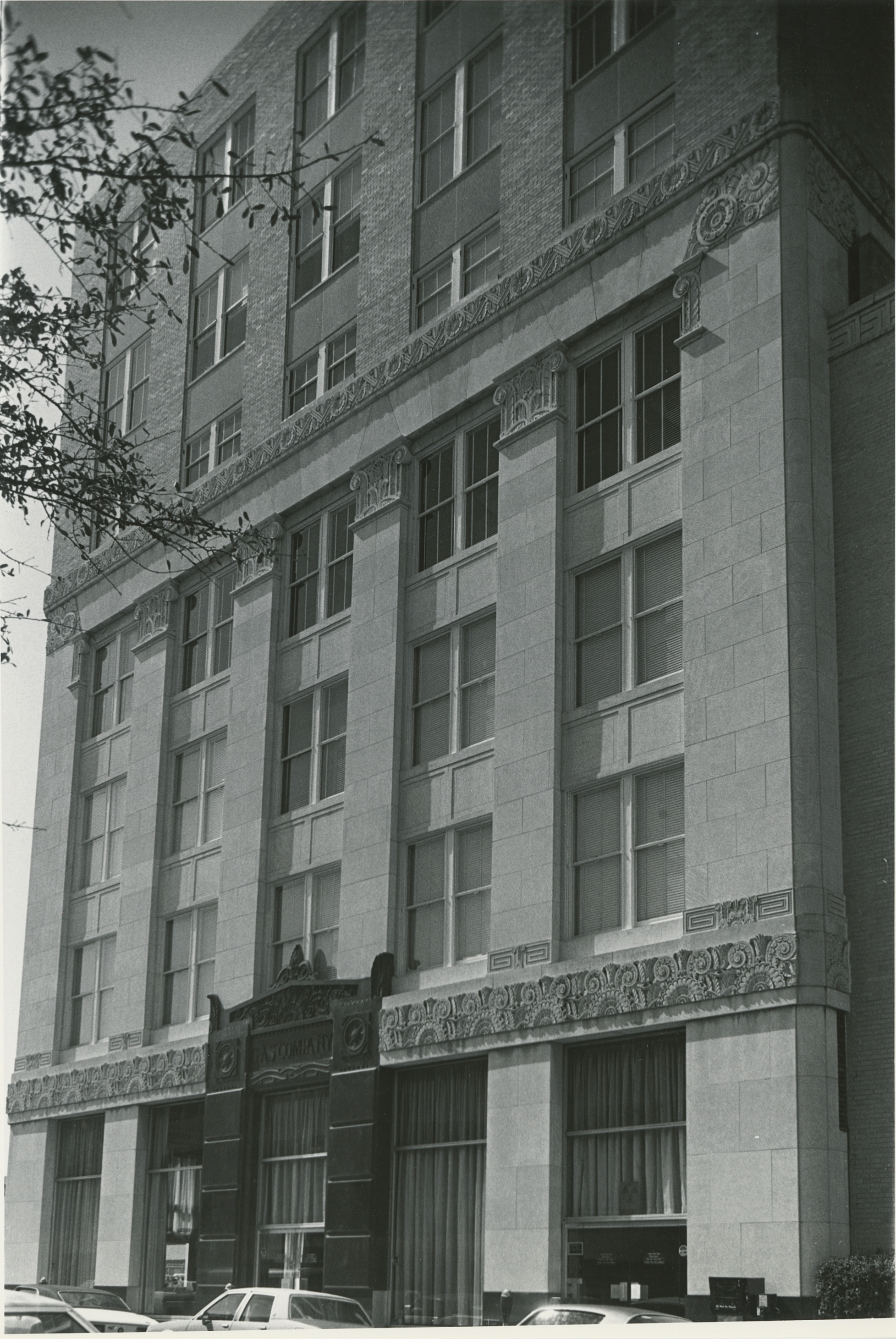
Exterior of the Lone Star Gas Building
In the early decades of the twentieth century, Fort Worth experienced a major boost in prosperity thanks to the growth of large industries in the city. Meatpacking plants, oil refineries and gas pipelines, and wartime air fields all contributed to the development of Fort Worth into a major metropolis. The rapid influx of money and people brought on by the fossil fuel industry in particular led to a boom in building construction that began in the 1920s and lasted through the 1930s. Many of the most recognizable buildings in Fort Worth today, such as the Texas & Pacific railway passenger station (which now houses loft apartments) or the Will Rogers Memorial Center, were constructed during this period. In addition to commercial development, the New Deal and the Public Works Administration allowed for the construction of new public schools, hospitals, and a new city hall and public library, among other projects. Most of these buildings – both private and public – were designed by architects of great prominence such as Wyatt C. Hedrick, Joseph R. Pelich, and Hubert Hammond Crane.
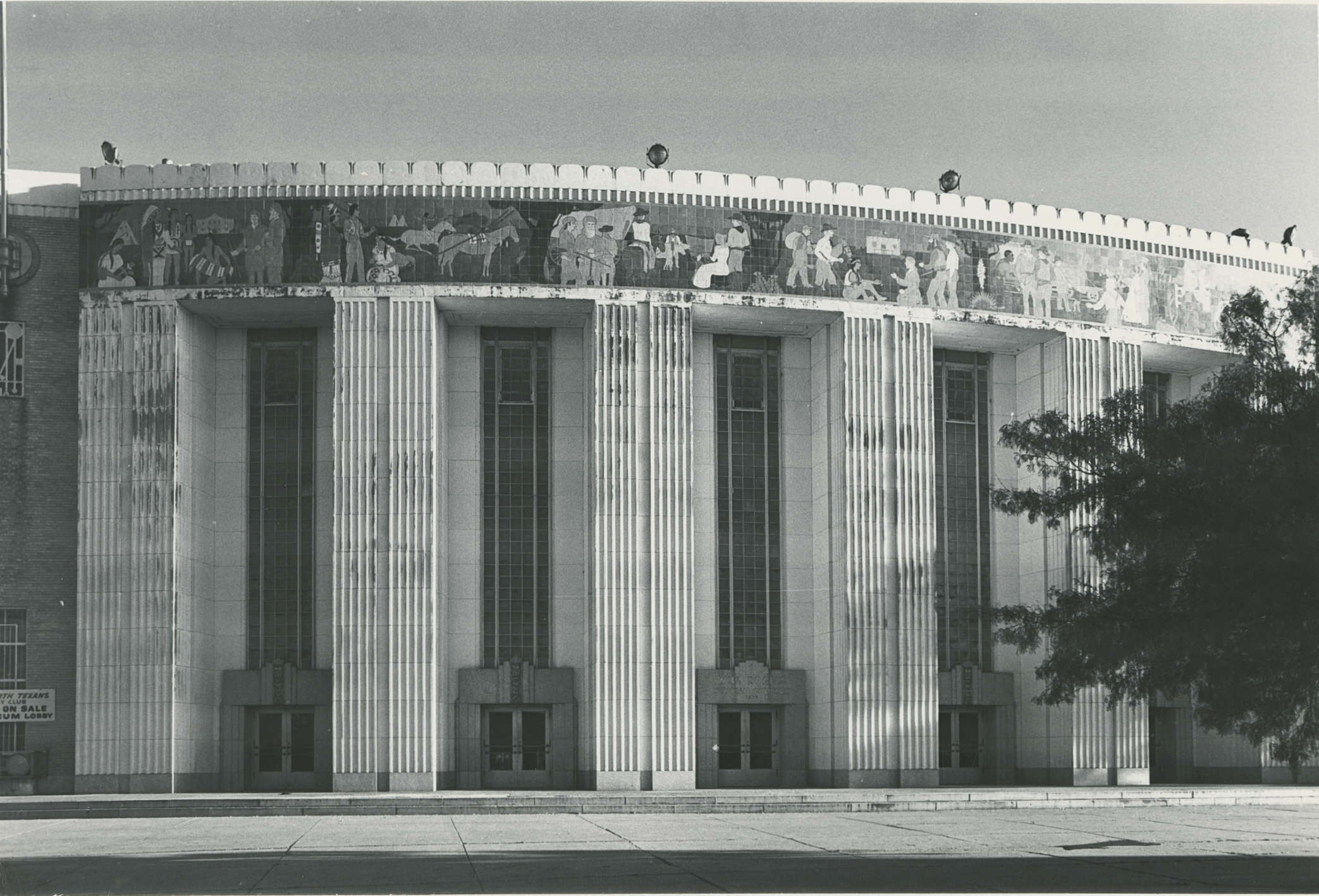
Exterior of the Will Rogers Memorial Center
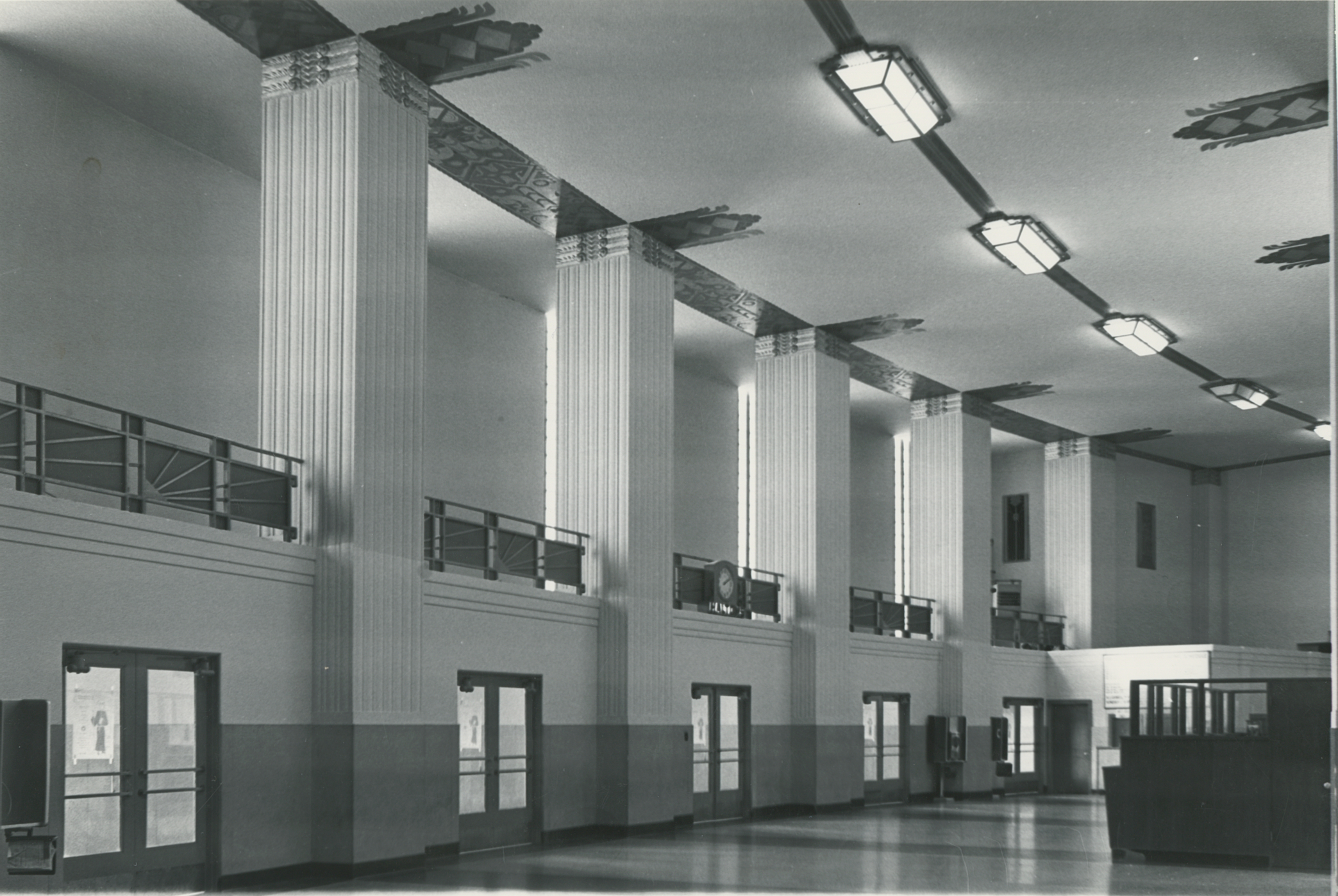
Interior of the Will Rogers Memorial Center
Although some of Fort Worth’s Art Deco buildings have been demolished over the years, many remain prominent features of the city’s landscape, in no small part thanks to the tireless work of people like Judith Cohen. In recent decades, many of these buildings have been painstakingly restored to their former glory, such as the Blackstone Hotel, which sat vacant and deteriorating for fifteen years before being reopened in 1999. Additions to existing Art Deco buildings, such as the Will Rogers Memorial Center, are generally designed to fit the existing aesthetic.
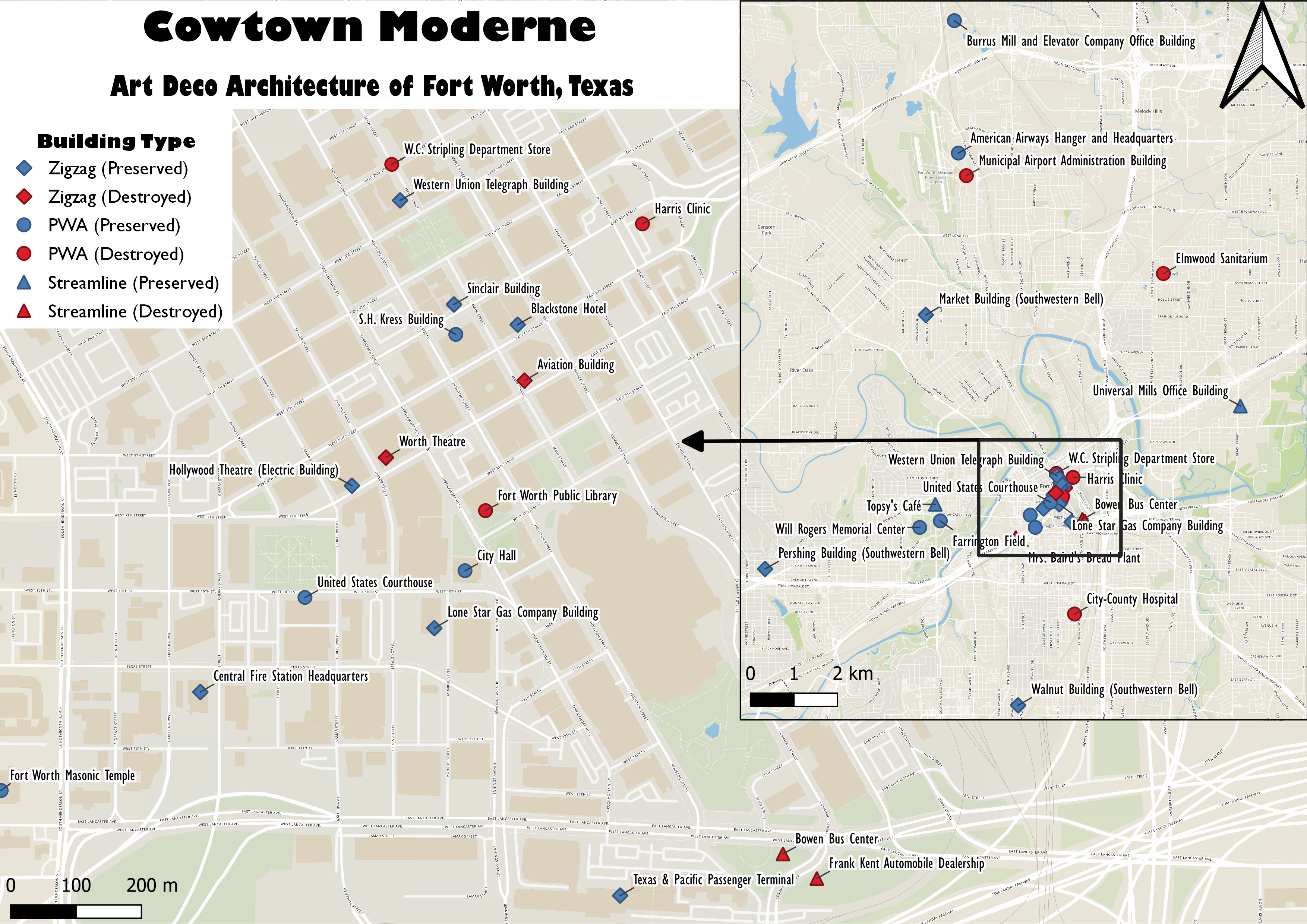
Map of Art Deco architecture in Fort Worth (map created by Kevin Moskowitz)
Judith “Judy” Bena Singer was born on January 1, 1936 in Philadelphia. From 1953 to 1955, she studied Interior Design at the Drexel Institute (now Drexel University) and attended the Temple University School of Oral Hygiene. In 1955, Singer married Donald “Don” Mortimer Cohen (1931-2014), of Stroudsburg, PA, whom she had met in 1953 through family friends. Donald, a physician by trade, became an accomplished photographer while stationed in Nuremberg, Germany with the U.S. Army Medical Corps, and would later provide the photographs of Fort Worth’s buildings used to illustrate Judy’s thesis and the book Cowtown Moderne. Judy and Don would have four children together: Daniel (1957), Diana “Dede” (1959), Steven (1961), and Jordana “Dana” (1965). In October 1963, after Don completed a residency in pathology at the Mayo Clinic in Rochester, Minnesota, the Cohen family relocated to Fort Worth, where Don took a job as one of three members of a new pathology group at Harris Methodist Hospital.
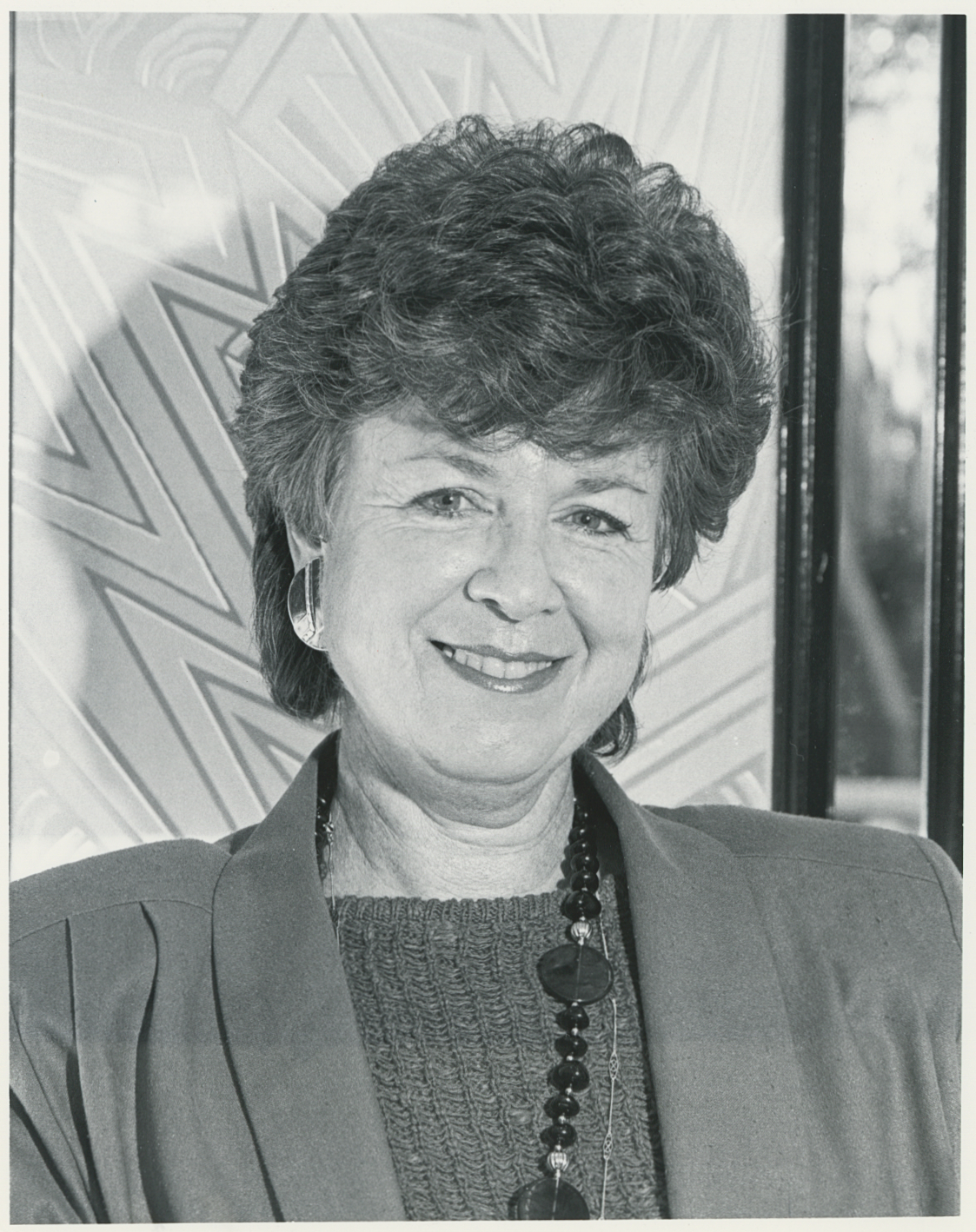
Portrait of Judith Singer Cohen
Cohen later decided to continue her education, earning her Bachelor’s degree in Art History (cum laude) from Texas Christian University in 1975, followed by a Master’s degree (summa cum laude) from Southern Methodist University in 1982. While earning her Master’s degree, she served as the slide librarian and curator for the Department of Art and Art History at Texas Christian University. In the early 1980s, Cohen’s curatorial work sent her traveling extensively throughout Europe and to Israel, researching architectural history and acquiring new slides for the TCU library.
It was also during this time that Cohen was introduced to Art Deco design, being encouraged by her advisor, Tony Jones, to document the architectural style “while the path was still warm,” as many of Fort Worth’s buildings from this period were being slated for demolition. For her Master’s thesis, Cohen painstakingly documented the history of many of Fort Worth’s Art Deco buildings and the contexts in which they were designed and constructed. In 1988, after extensive additional research with the Fort Worth Chapter of the American Institute of Architects, sponsors of her book, Cohen published Cowtown Moderne, an expansion of her Master’s thesis. In the book, which doubles as both an architectural survey and a cultural history, Cohen documents the buildings of Fort Worth constructed between 1920 and 1940 in the various Moderne architectural styles. Although she made several proposals for a second edition of the book, as well as a reprint of the first edition, neither project ultimately came to fruition.
Since earning her Master’s degree in 1982, Cohen has operated as an independent researcher and lecturer. In the years following the completion of her degree, she began offering a variety of lectures and walking tours related to Art Deco architecture to community, business, and professional groups, as well as national architectural and historic preservation conferences. She has also authored and co-authored several articles for news publications, popular periodicals, and professional journals. Cohen has received many awards, accolades, and honors for her work not only as an author, but as a prominent member of the historic preservation community in Fort Worth. Through her work as a consultant, Cohen contributed to the preservation of the Texas & Pacific complex, the Sinclair Building, additions to the Will Rogers Memorial Coliseum, the Lone Star Gas Building, and the Blackstone Hotel, among other locations. Prominent organizations with which Cohen has been involved include Historic Fort Worth, the Tarrant County Historical Society, the National Trust for Historic Preservation, the American Institute of Architects, the International Coalition of Art Deco Societies, the Fort Worth Main Street Task Force, and the TCU College of Fine Arts Board of Visitors.
Comments
Review of Cowtown Moderne Art Deco Archecture of Fort Worth TX
Thanks to everyone who created this beautiful article
It is so well done AND very flattering …..
Judy Cohen
Judith Singer Cohen and Art Deco in Fort Worth
A detailed, deserving write up. Enlightening layout with photos and especially the map highlighting the Art Deco treasures in Cowtown.
Add new comment